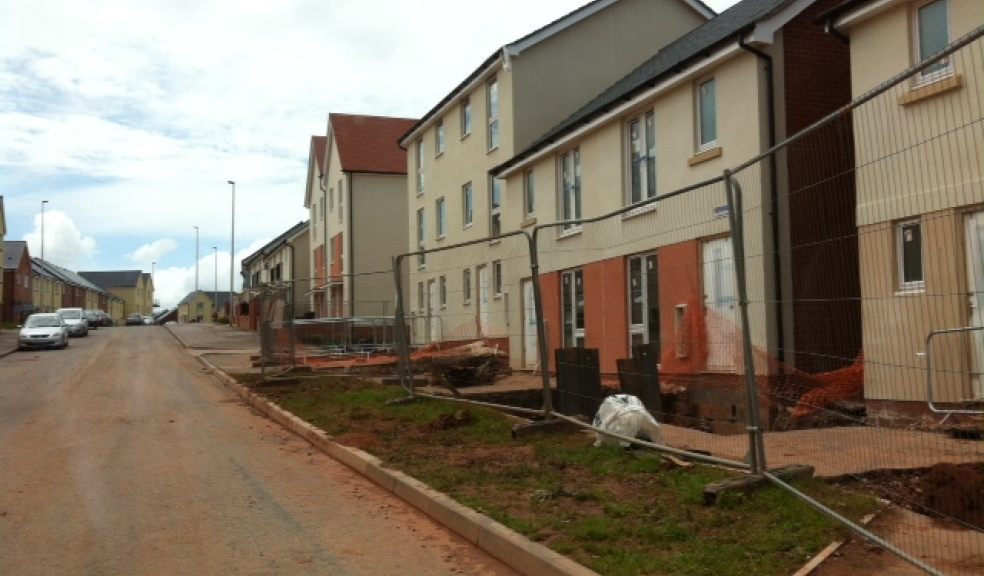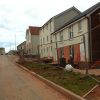
Challenges for EDDC as Cranbrook grows
As East Devon’s new town of Cranbrook takes shape and expansion looks set to continue for several years to come, the district council needs to ensure that it has enough staff with the right skills to deal with the many challenges that the blossoming community will pose.
But any new staff recruitment will take place against a background of shrinking resources within local government. There are hopes of up to £285,000 from the Department for Communities and Local Government, but this funding has not been confirmed, so other sources of funding will need to be found – including possibly dipping into the council’s savings.
The development of Cranbrook is proceeding at a rapid pace, with a reported 757 homes already occupied and work having started on the neighbourhood shops and education campus. The town’s population is now around 2,000 people and the school roll for St Martin’s Primary has increased tenfold in the space of two academic years. The town will grow to 6,000 homes and possibly more, depending on the success of additional planning applications in the pipeline or expected.
East Devon District Council needs to recruit extra people to do a range of jobs to ensure that Cranbrook develops in a structured and disciplined way, both for the sake of the town itself and for the wider area and neighbouring communities.
The explosion of growth at the western end of the district, close to the border with Exeter, not only involves new homes, but also provision of many of the employment opportunities that Cranbrook residents can hope to find when they move in. Planning supervision also needs to be maintained in the burgeoning Growth Point sector.
But while the residential and commercial expansion is good news for the economy of the district and the region, it comes against a background of shrinking funds for local councils. This is due to reduced Government funding to local councils and other measures like the freezing of council tax.
How to recruit the necessary staff to supervise operations and maximise the potential of the area is the challenge that East Devon’s cabinet will be asked to consider when they receive a report on Wednesday (5 November).
It’s estimated that around £144,000 in funding will need to be found to cover costs of new staff over the next two years. Whilst some of the funding will come from developer contributions (Section 106 and Community Infrastructure Levy – CIL) and from Government grants, it’s likely that the district council will have to underwrite at least part of the funding from its own coffers.
The council’s most obvious option is to divert funds earned from the New Homes Bonus away from savings and instead spend some of this money on extra staff who have the necessary skills to cope with the challenges ahead.
The most pressing need the council faces is to keep pace with the developers’ progress, working with house-builders and public sector partners to produce a masterplan for Cranbrook present and future.
With pressure coming from – almost literally – every point of the compass around Cranbrook, there is a need to ensure that a possible multiplicity of new housing developments is covered by a joined-up plan. The existing New Community Partners (NCP) are closing in on Phase 2 of the agreed development and have indicated that they will be coming to East Devon with proposals for many more homes before the end of this year.
Other house-builders are also queueing up to submit planning proposals for sites near to – but not within the original built-up boundary of – Cranbrook.
The work on these aspects of the Cranbrook expansion needs to take place alongside the other vital tasks of supervising current operations to ensure that homes comply with design conditions and that the many amenities being provided for residents – from play areas to the country park and from shops to a new rail station – are constructed on time and to the correct specifications.
If a request for Whitehall funding to pay for consultancy work to support the new community masterplan exercise is successful, the council can expect a grant of £82,000 plus an £18,000 contingency fund. An answer is currently awaited, but if funds are not forthcoming the council will have to pay for this work itself – at least in the short term. The council is also waiting to hear about the fate of bids for other Whitehall funding, up to a total of £285,000.
Councillors will on Wednesday be asked to approve the suspension of standing orders to allow the engagement of the Commission for Architecture and the Built Environment (CABE) to support the visioning and master-planning exercise and to provide consultancy support for the determination of planning applications.
There are currently just two planning officer posts dedicated to the development of Cranbrook. The report looks to create and fund an additional dedicated post and to extend the life of a second, existing post for Cranbrook and other parts of the Growth Point.
Concluding his report to cabinet members, Ed Freeman, Service Lead – Planning, says: “As identified, the level of work at Cranbrook and the Growth Point will increase significantly. Without additional staff resources, it is anticipated that an effective and proactive service for Cranbrook will not be possible. It should also be noted that the other major projects in the growth point area are increasing and therefore it is not sustainable to keep pulling staff from other major projects to serve Cranbrook, as the problem will only be moved”.

















